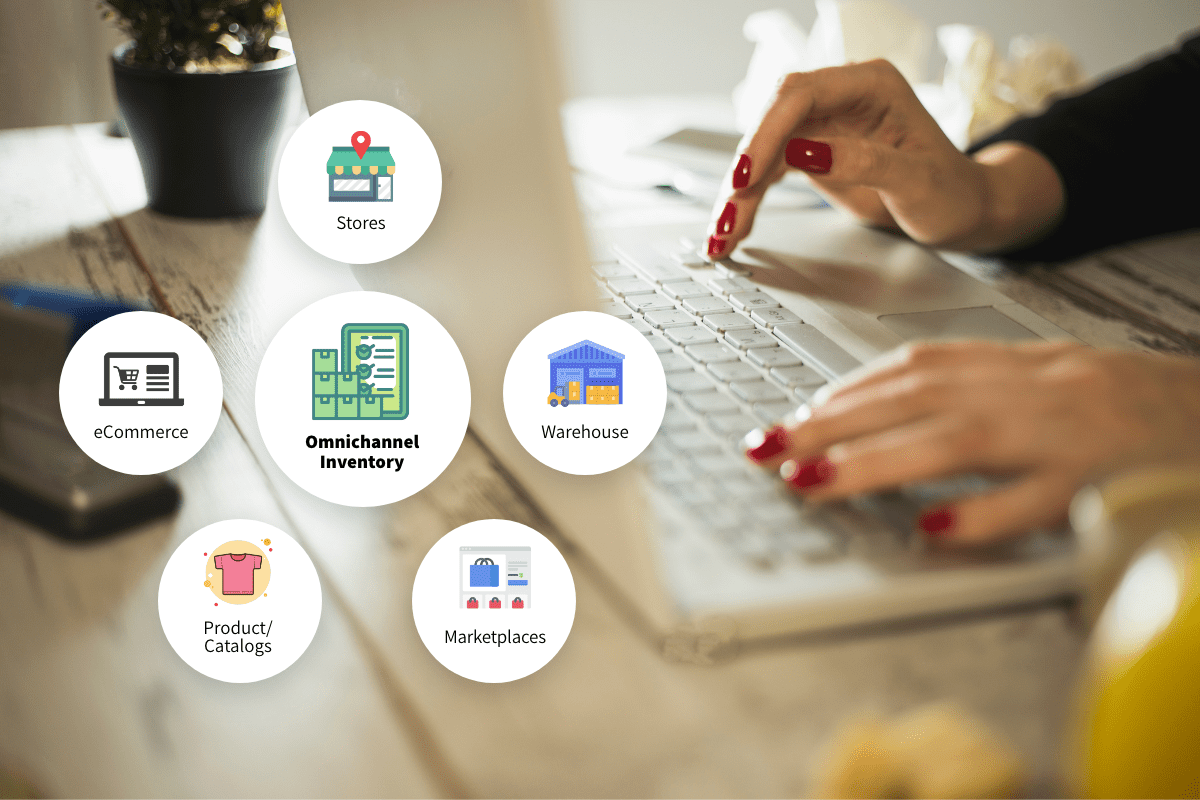In the story of every successful eCommerce business, its inventory management tool is always the unsung hero. That’s as it should be.
When you’re running a luxury brand, you need to keep your customer focused on the digital experience they see, and of course the styles and quality of the products you’re selling.
Consumers should never have to think about the way you approach effective inventory management – even though it represents a critical element in keeping them satisfied and loyal.
What is Inventory Management?
You’re only as valuable to customers as your ability to supply them with what they want. That’s the real definition of inventory management: a way to eliminate the risk of disappointing shoppers.
Think through the typical eCommerce customer journey: they visit a website or marketplace and spend minutes or even hours contemplating a purchase.
When the moment of truth comes, they click “Buy” or “Add to cart.”
If the words “Item not in stock” comes up, the only option is to have them join a waitlist and to recommend alternate products. In many cases, of course, the customer will likely choose to shop elsewhere, perhaps never to return.
Inventory management is also critical during the fulfillment process. In fact, a recent survey found nearly half of consumers feel that delivering correct and accurate orders is essential to earning their trust.
Why use Omnichannel Inventory Management?

Many brands find effective inventory management relatively simple if they are primarily focused on physical retail with only one or two locations.
Things get much more complex as you pursue a growth strategy, particularly as you add eCommerce channels beyond your own web site.
Third-party marketplaces such as Amazon or Zalando can offer exposure to a larger number of shoppers, for instance. Selling through social media services such as Facebook and Instagram, meanwhile, can ensure your brand is top of mind when consumers are ready to buy.
This is where brands typically look for a retail inventory management system.
Operating as an omnichannel seller depends upon being able keep on top of stock and respond to sudden changes in customer demand. You need real-time visibility into inventory and sales updates across every channel, along with integrations with third-party eCommerce platforms and advanced reporting capabilities.
According to a study of eCommerce merchants conducted earlier this year, almost a quarter (22%) now operate three different distribution centers. These warehouses may be spread across multiple countries or even continents. Choosing the right eCommerce inventory management software ensures you can decentralize the process of tracking and fulfilling orders and never giving customers an unpleasant surprise.
How to overcome the complexity of Omnichannel Inventory Management for Marketplaces

As you consider which inventory management tool is right for your brand, keep in mind the following considerations:
Determine the scope and complexity of inventory splits
Your business goals might include making your products available to any customer who wants them, regardless of location, but that means being able to manage your catalog at a per-warehouse level.
Traditional retail inventory management systems usually don’t offer inventory splitting to address specific marketplace or market scenarios. Unless you have the in-house capabilities to completely customize your tech stack, inventory splitting is an essential component of an eCommerce inventory management system.
Evaluate the current and future cadence of inventory updates
Perhaps you’re a retailer where inventory updates are happening once an hour, at which point the values of your products are changed across multiple third-party marketplaces.
As your sales activity continues to grow, however, that cadence might not be frequent enough to prevent stockouts and cancelled items. Marketplaces naturally frown upon merchants where this happens regularly because it reflects on their customer experience as well as the merchant.
Instead, look for an inventory management tool that can update marketplace inventory even more often than your eCommerce channel. With an order reservation algorithm, for instance, you’ll be able to support less frequent inventory updates for products that may have limited availability.
Think through marketplace-specific needs for inventory thresholds
A physical store operating in a bustling city will need to have more inventory on hand than one set up in a remote rural community. In a similar way, some marketplaces will prove more effective for you as a sales channel than others.
Make sure you opt for an eCommerce inventory management system that allows you to take a more granular approach to controlling the minimum stock you’ll need to satisfy customers based on where they’re most likely to shop.
What Highstreet.io brings to eCommerce Inventory Management
Growing your eCommerce sales often leads to working with a wide ecosystem of channels and marketplaces, and getting the details right demands a best-in-class inventory management tool.
Highstreet.io embeds eCommerce inventory management capabilities that can act as a hub between your products and all the channels where you want to sell them. This includes synchronizing inventory for marketplaces with warehouses and stores.
Book a free consultation with us to learn what effective inventory management could look like for your business.

